Get ready to dive into the world of motion graphics without breaking the bank!
Whether you're a seasoned pro or just dipping your toes into the world of VFX and animation, finding the right software can be a daunting task.
With hefty subscription fees and a dizzying array of options to choose from, it's easy to feel overwhelmed.
But fear not, because we've got you covered.
Say goodbye to pricey subscriptions and hello to our handpicked selection of free motion graphics software that packs a punch without costing a dime.
From powerful 2D and 3D design tools to open-source alternatives to industry favorites, there's something here for everyone.
- 15 Best Free Motion Graphics Software
- Blender
- Unreal Engine
- Linearity
- Synfig Studio
- Davinci Resolve
- GIMP
- Animaker
- Sketchbook
- OpenToonz
- Pencil2D
- Krita
- LottieFiles
- FlipaClip
- SVGator
- Daz3D
15 Best Free Motion Graphics Software:
1. Blender

Blender offers a cost-effective alternative to expensive 3D software subscriptions, making it an ideal choice for newcomers, students, and professionals alike.
Whether you're creating intricate models, captivating animations, or stunning visual effects, Blender empowers artists to unleash their creativity without financial constraints.
With its extensive feature set and active community, Blender stands as a top choice for 3D creation and animation.
Features:
- Rendering capabilities for creating stunning visualizations.
- Robust modeling tools for shaping 3D objects.
- Sculpting features for intricate detailing.
- Animation and rigging functionalities for bringing characters to life.
- Grease Pencil for 2D animation.
- VFX tools for adding special effects.
- Simulation capabilities for realistic interactions.
- Video editing capabilities for seamless post-production.
- Scripting support for customization and automation.
Pros of Blender:
- Free and open-source, making it accessible to all users.
- Cross-platform compatibility (Linux, Windows, macOS).
- Strong community support for assistance and collaboration.
- Versatile and comprehensive, covering various aspects of the 3D pipeline.
- Regular updates and improvements driven by an active development community.
Cons of Blender:
- A steep learning curve, especially for beginners.
- The interface may be overwhelming initially.
- Some advanced features may require additional learning and expertise.
- Performance may vary depending on hardware capabilities.
2. Unreal Engine
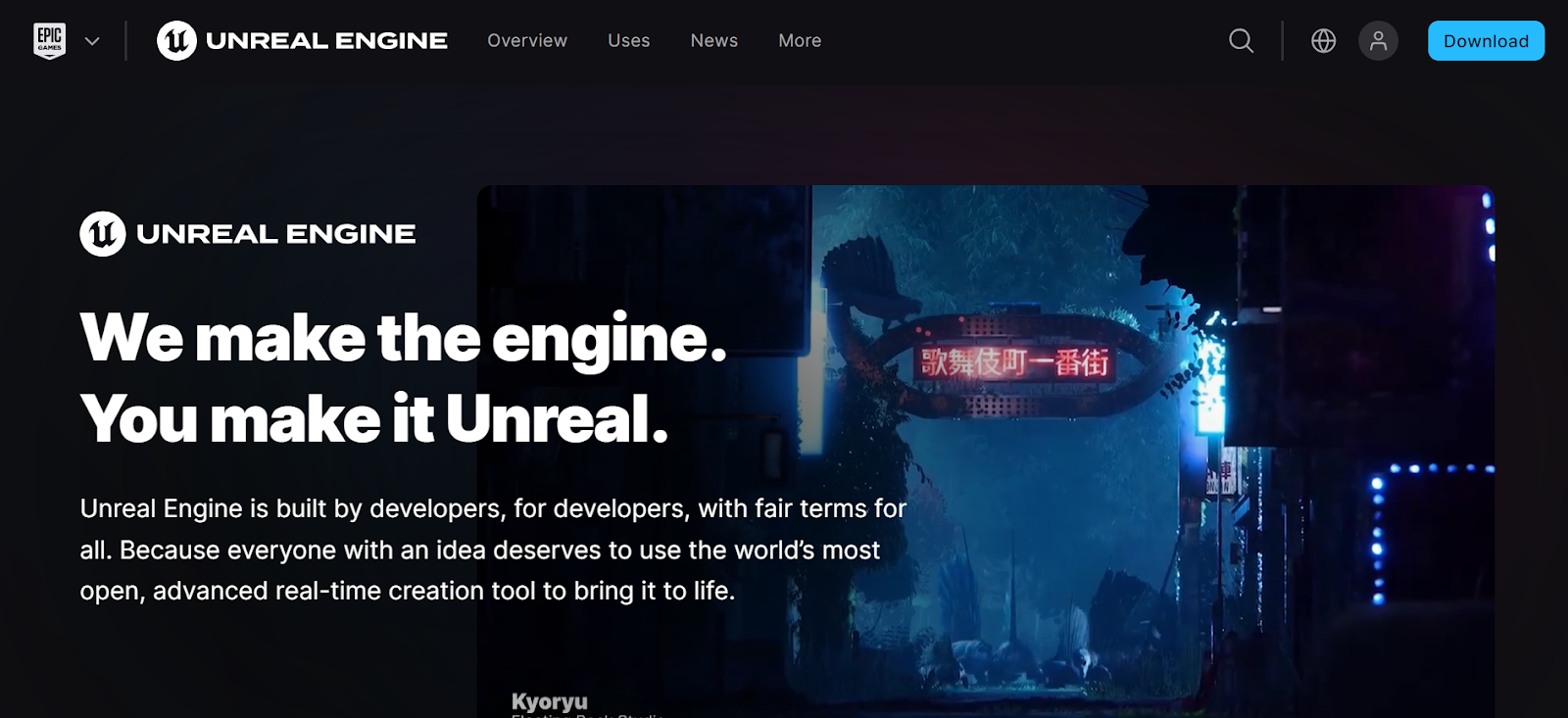
Unreal Engine offers unparalleled real-time rendering and high-quality graphics, making it a potent tool for motion graphics.
Yet, its complexity, resource demands, and licensing fees may present hurdles for some users, despite its extensive capabilities across multiple industries.
It is free to use, but a royalty fee is required for commercial products.
Features:
- Pipeline integration
- Worldbuilding
- Rendering, lighting, materials
- Simulation and Effects
- Gameplay and interactivity authoring
- Developer tools
Pros of Unreal Engine:
- Real-Time Rendering: Instant visual feedback without rendering delays.
- High-Quality Graphics: Stunning visuals with realistic lighting and effects.
- Blueprint Visual Scripting: Accessible animation and interaction creation.
- Asset Marketplace: Extensive library of assets for accelerated production.
- Integration with Other Software: Seamlessly integrates with Maya, Blender, and more.
Cons of Unreal Engine:
- Steep Learning Curve: Complex interface may deter beginners.
- Resource Intensive: Demanding hardware requirements.
- Lack of Motion Graphics-Specific Features: Limited compared to dedicated software.
- License Fees: Commercial use incurs licensing fees.
- Limited 2D Animation Tools: Strength lies in 3D animation.
3. Linearity
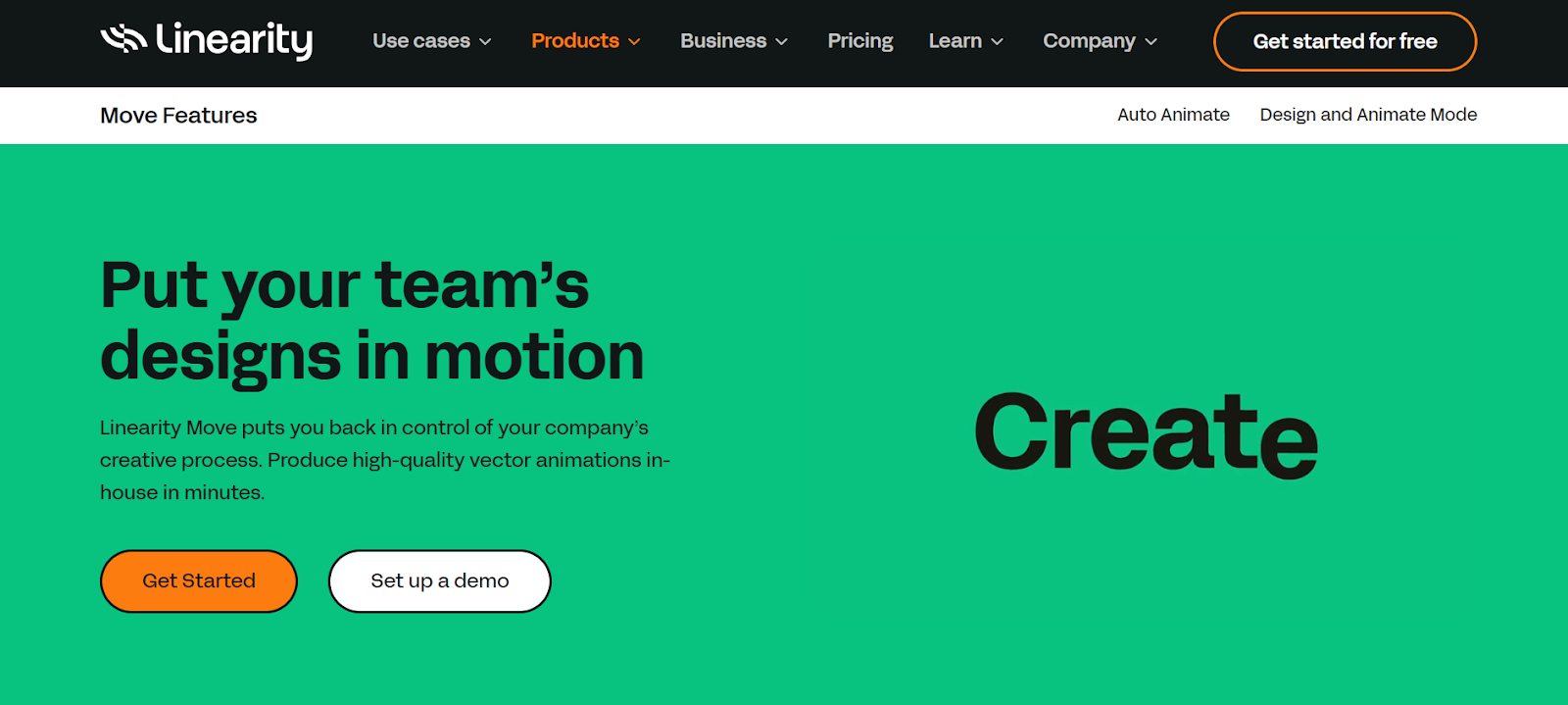
Linearity Move presents a compelling solution for graphic designers and marketers seeking powerful yet accessible animation tools.
With its promising features, seamless integration, and multi-device support, it aims to revolutionize motion graphics design, promising increased efficiency and enhanced ROI for users
Features:
- Animation presets for efficient motion design.
- Integration with design tools like Linearity Curve, Figma, and Adobe Illustrator.
- Multi-device support across macOS, iPadOS, and iPhoneOS.
- Enhanced production speed promising 4X acceleration.
- Seamless organization of scenes and layers within the animation timeline.
Pros of Linearity:
- User-friendly interface for quick onboarding.
- Cross-device workability enhances flexibility for designers on the go.
- Significant reduction in animation costs and increased marketing ROI.
- Integration with popular design software streamlines workflow.
- Promising updates on team collaboration and AI-powered features.
Cons of Linearity:
- Limited information on advanced features and capabilities.
- A relatively new platform, with potential for stability and performance issues.
- Exact pricing and subscription details may not be clear yet.
- The potential learning curve for users transitioning from other animation software.
4. Synfig Studio

Synfig Studio offers a powerful platform for vector-based animation, catering to both beginners and experienced animators.
While it may not match the feature set of premium software, its accessibility, robust features, and extensive online resources make it a valuable tool for animation enthusiasts of all levels.
Features:
- Vector graphics for scalability and smooth designs.
- Bone system for precise character and object movements.
- Parameter linking for layer control.
- Distortion layer for creative designs.
- Availability on Windows, macOS, and Linux distributions.
- Extensive online tutorials for beginners.
Pros of Synfig Studio:
- Free and open-source, ensuring accessibility for all users.
- Robust features are suitable for various animation styles.
- Advanced capabilities cater to experienced animators.
- Extensive online tutorials facilitate software learning.
Cons of Synfig Studio:
- Feature set not as extensive as premium motion design software.
- Some advanced features may require scripting or plugins.
- Official documentation and tutorials are somewhat limited.
- May require time to master due to its complexity.
5. Davinci Resolve

DaVinci Resolve stands out as a versatile and powerful motion graphics software, offering a wide range of features suitable for both editing and motion graphics creation.
With its intuitive interface, advanced capabilities, and free-to-use model, it's a compelling option for professionals and enthusiasts alike looking to create stunning visuals and animations.
Features:
- Fusion module for creating stunning visual effects, animations, and motion graphics.
- High-resolution video export up to Ultra HD 3840 x 2160.
- Advanced film color processing with HDR palette.
- Integrated Fairlight technology for professional audio post-production.
- Supports up to 2,000 tracks via Fairlight Audio Core.
- Extensive library of transitions and effects.
- Intuitive audio trimming with waveform visualization.
- Color Match feature for precise color adjustments.
- Support for image stabilization, 3D tracking, reshaping, and RGB mixing.
- Syncing clips on the timeline and independent timeline sharing for efficient collaboration.
Pros of Davini Resolve:
- Free to use with an option to upgrade for advanced features.
- Powerful motion graphics capabilities integrated within the editing interface.
- Advanced color grading tools suitable for professional projects.
- Comprehensive audio post-production features with Fairlight technology.
- Intuitive interface with extensive customization options.
- Fast and efficient export options for sharing projects online.
Cons of Davinci Resolve:
- Some advanced features may require upgrading to DaVinci Resolve Studio.
- Steep learning curve, especially for beginners transitioning from other software.
- Resource-intensive, requiring powerful hardware for smooth operation.
- Limited third-party plugin support compared to other software.
6. GIMP
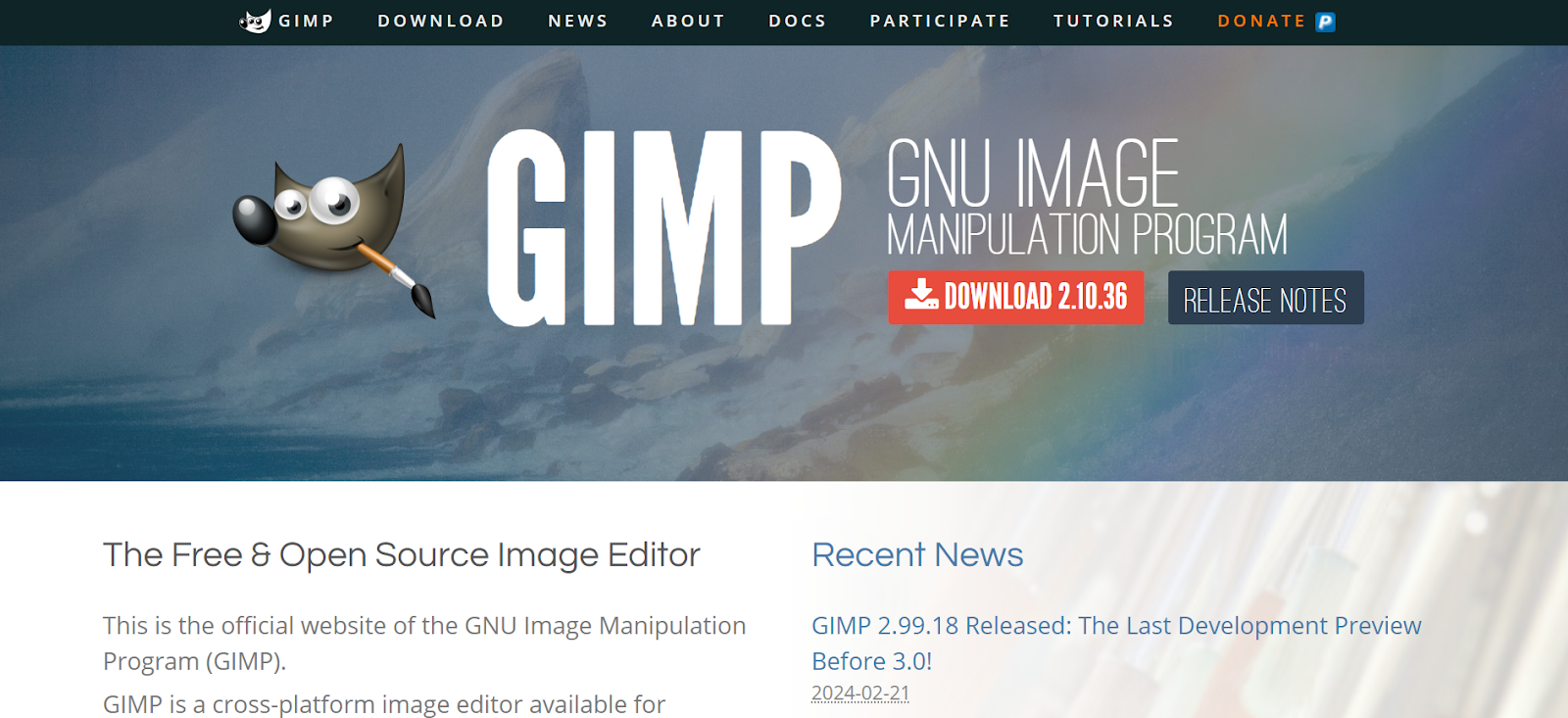
GIMP (GNU Image Manipulation Program) stands out as a prominent free and open-source alternative to Adobe Photoshop, offering a plethora of features for photo retouching, image composition, and authoring.
With its cost-free model and versatile capabilities, it serves as an excellent option for both beginners and experienced motion graphics designers.
Features:
- Comprehensive toolset for photo editing, including a channel mixer and perspective clone tool.
- Lightweight alternative to Adobe Photoshop with customizable workspace.
- Compatibility with Photoshop files, although updates may occasionally cause issues.
- Strong community support, including documentation and knowledge base.
- Platform availability: Windows, Mac, Linux.
Pros of GIMP:
- Free and open-source, eliminating subscription costs.
- Frequent updates ensure ongoing improvements and enhancements.
- Extensive support from the community, facilitating learning and troubleshooting.
- No bloatware, providing a streamlined user experience.
Cons of GIMP:
- Steep learning curve, especially for beginners transitioning from other software.
- Limited CMYK image support may be cumbersome for some users.
- Occasional compatibility issues with Photoshop updates.
7. Animaker
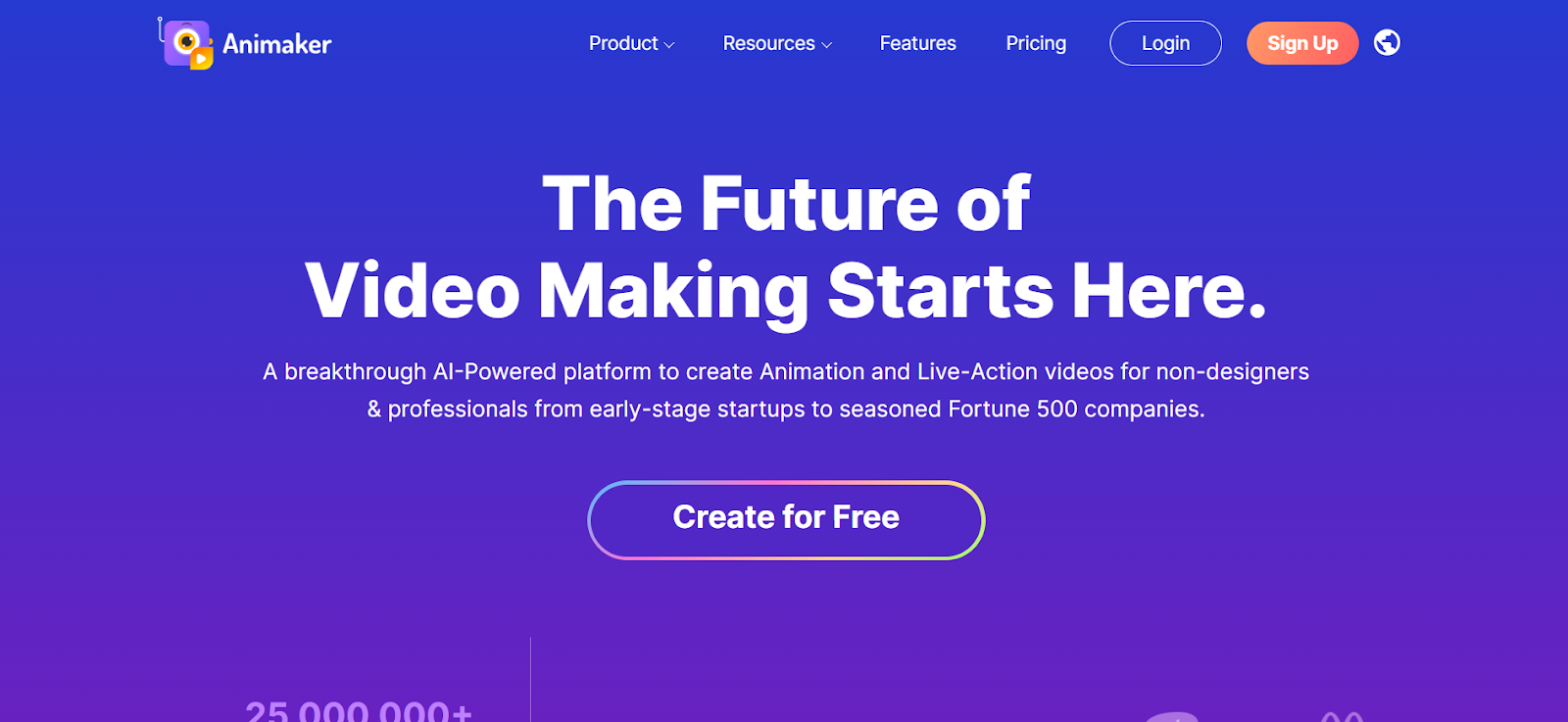
Animaker offers a robust platform for creating animated videos and infographics, with features tailored for users of all skill levels.
From its intuitive interface to its extensive range of tools and templates, Animaker provides a comprehensive solution for various animation needs, backed by a notable client base including brands like Amazon, Nokia, and Dell.
Features:
- Supports creation of handcraft videos, whiteboard videos, marketing bits, animated infographics, and educational videos.
- Offers 2D and 2.5D video creation with a variety of tools and features.
- Supports full HD and 4K resolution, as well as both horizontal and vertical layouts.
- Provides animation features such as recording, curve, camera in/out, transition effects, and enter/exit effects.
- Includes audio features like text-to-speech, preloaded background tracks, sound effects, and voice recording.
Pros of Animaker:
- Newbie-friendly user interface for easy navigation and usage.
- Wide range of templates to kickstart projects.
- Customization options for characters and animations.
- Supports high-resolution outputs for professional-quality videos.
Cons of Animaker:
- High system requirements may limit accessibility for some users.
- Limited soundtrack options may require users to source additional audio elsewhere.
8. Sketchbook
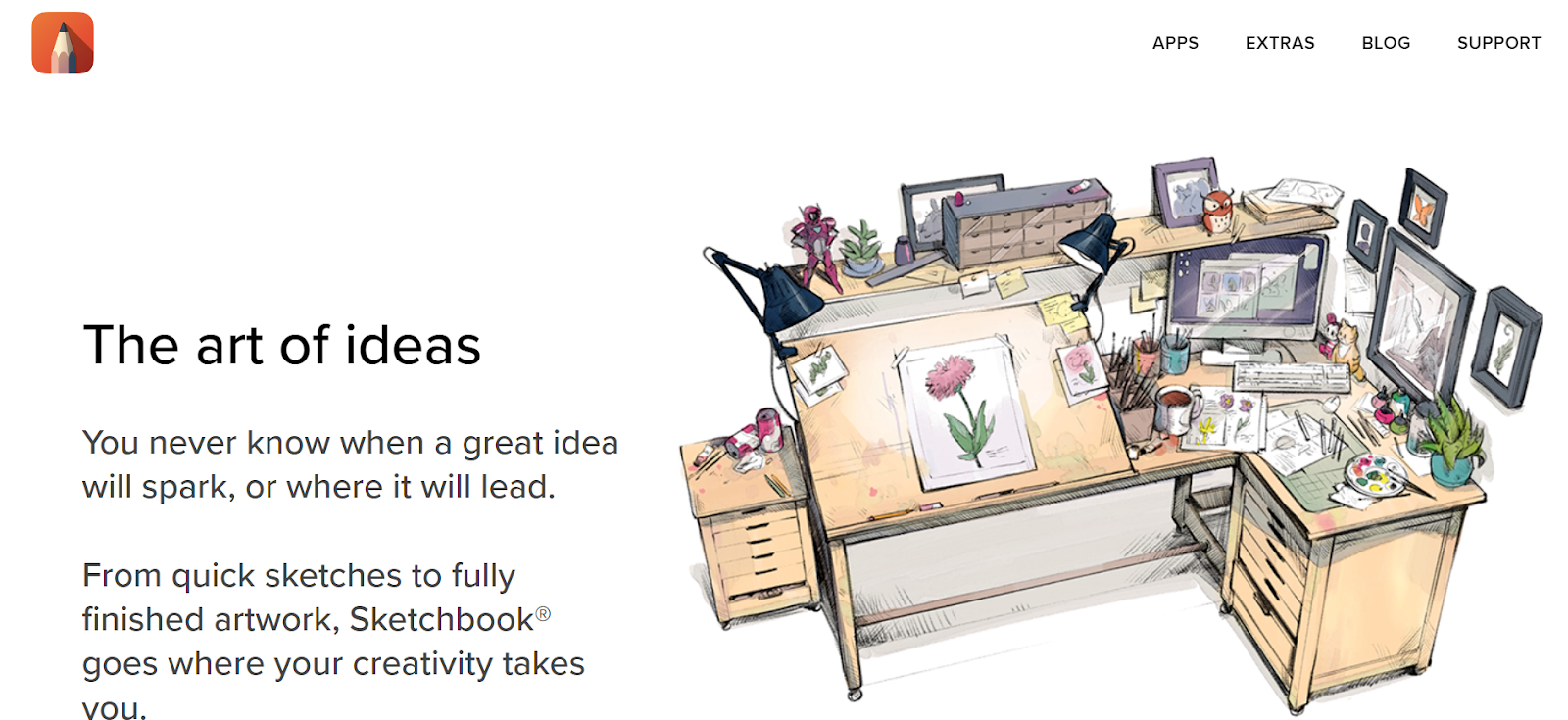
Sketchbook by Autodesk emerges as a resourceful motion graphics software, ideal for artists seeking an alternative to Adobe Illustrator or CorelDRAW's costly payment models.
As a free-to-use tool from Autodesk, renowned for AutoCAD, Sketchbook caters to a wide range of creators, from doodlers to product designers and architects, enabling quick iteration and communication of ideas through doodles, concept art, and storyboards.
Features:
- Extensive options of pencils, brushes, and color palettes for versatile creativity.
- Availability across various platforms, including desktop and mobile devices, offering flexibility and accessibility.
- Export options include jpg, png, VMP, Kiff, and PSD, preserving layered PSDs for seamless integration with other software.
- Intuitive drawing tools for creating basic shapes and adjusting rules as per preference.
- Ability to fill color into artwork and import/export layers as PSD.
Pros of Sketchbook:
- A wide array of pencils, brushes, and color options for creative freedom.
- Ideal for quick inspiration and sketching out ideas.
- Availability on multiple platforms enhances mobility and workflow flexibility.
Cons of Sketchbook:
- Enlarging projects may pose challenges.
- Some features may lack usability or clarity.
- Certain functions may be confusing for users, requiring familiarization.
9. OpenToonz
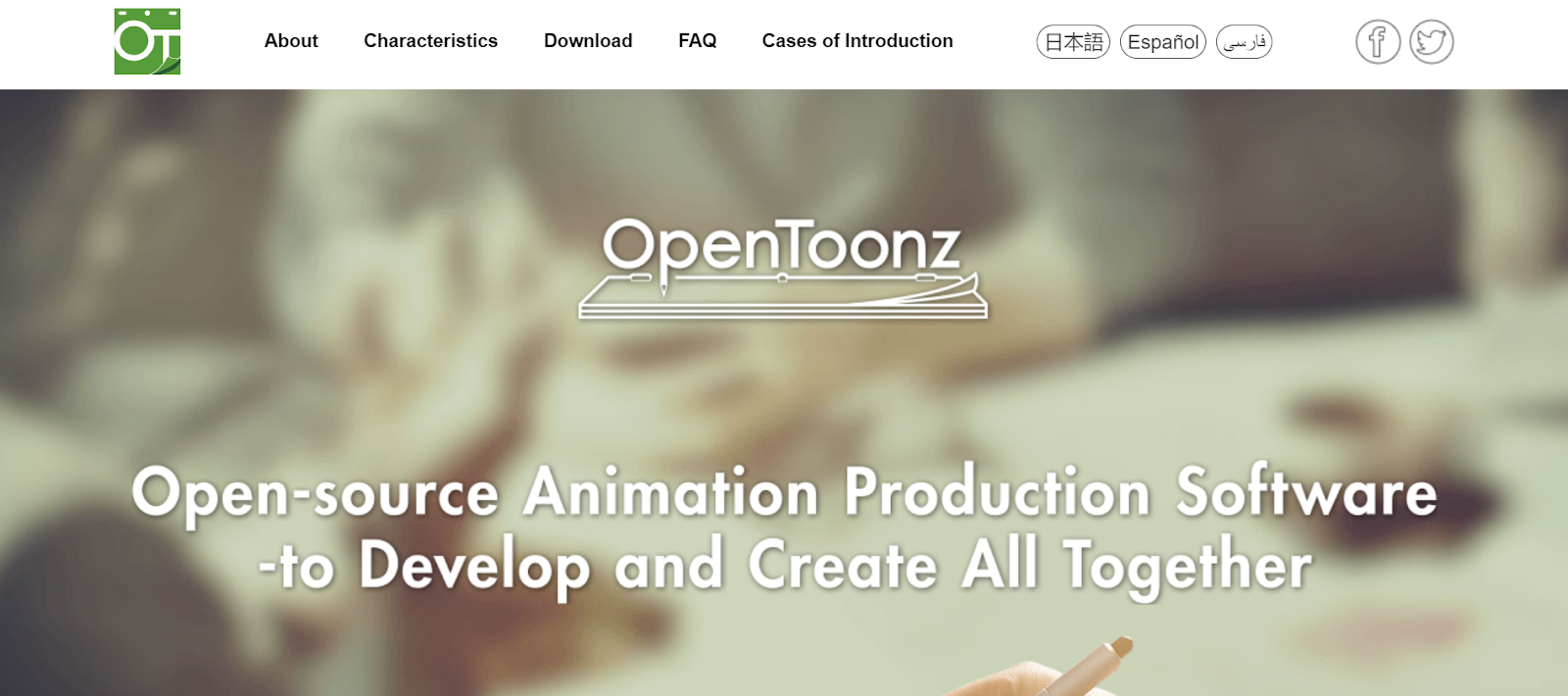
OpenToonz, originally tailored for 2D animation, has evolved to encompass robust features for motion graphics as well.
Its node-based interface enables users to create intricate and customizable animations, making it a versatile tool for both traditional animation and modern motion graphics projects.
Features:
- Node-based interface for intricate animation customization.
- Mesh tool for creating skeletons and generating simple or advanced animations without redrawing frames.
- Incorporation of a z-axis for working in a pseudo-3D space.
- GTS scanning tool for importing hand-drawn images.
- Easy modification of picture styles, including the addition of light and distortion effects.
Pros of OpenToonz:
- Accessible plugin for automating animation effects.
- Unique Xsheets & Timelines features for efficient animation planning.
- Built-in Audio/Soundtrack Implementer for synchronized sound design.
Cons of OpenToonz:
- Somewhat limited drawing capabilities compared to dedicated drawing software.
- The intricate setup process may require guidance or tutorials for new users.
- User interface design may feel outdated to some users.
10. Pencil2D
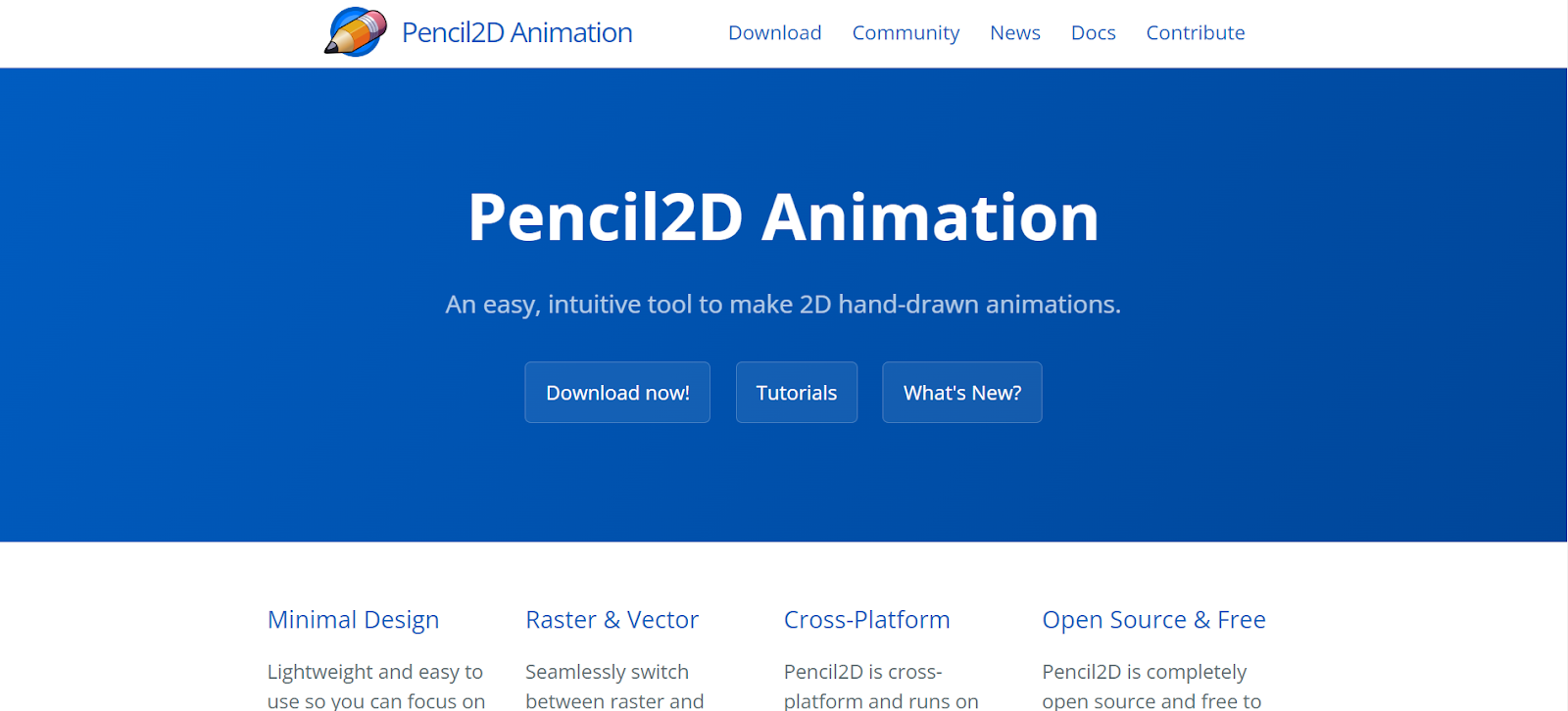
Pencil 2D serves as an ideal starting point for beginners venturing into animation, offering a simplistic interface and straightforward tools conducive to frame-by-frame drawing.
While it lacks advanced features for complex animations or shape tools, it provides a user-friendly experience for those just beginning their animation journey or seeking to bring external artwork to life through frame-by-frame animation.
Features:
- Basic, easy-to-understand interface tailored for beginners.
- Support for frame-by-frame drawing, suitable for traditional animation.
- Cross-platform compatibility, available for Windows, Linux, and macOS.
- Switching between raster and vector workflows for flexibility in animation creation.
Pros of Pencil2D:
- Easy-to-use interface for quick learning and animation creation.
- Open-source software, fostering community collaboration and development.
- Support for multiple languages, enhancing accessibility for global users.
Cons of Pencil2D:
- Lack of advanced tools such as shape tools for more complex animations.
- Primarily suited for beginners, with limited capabilities for experienced animators.
- Absence of support for 3D animation, restricting its use for certain projects.
11. Krita
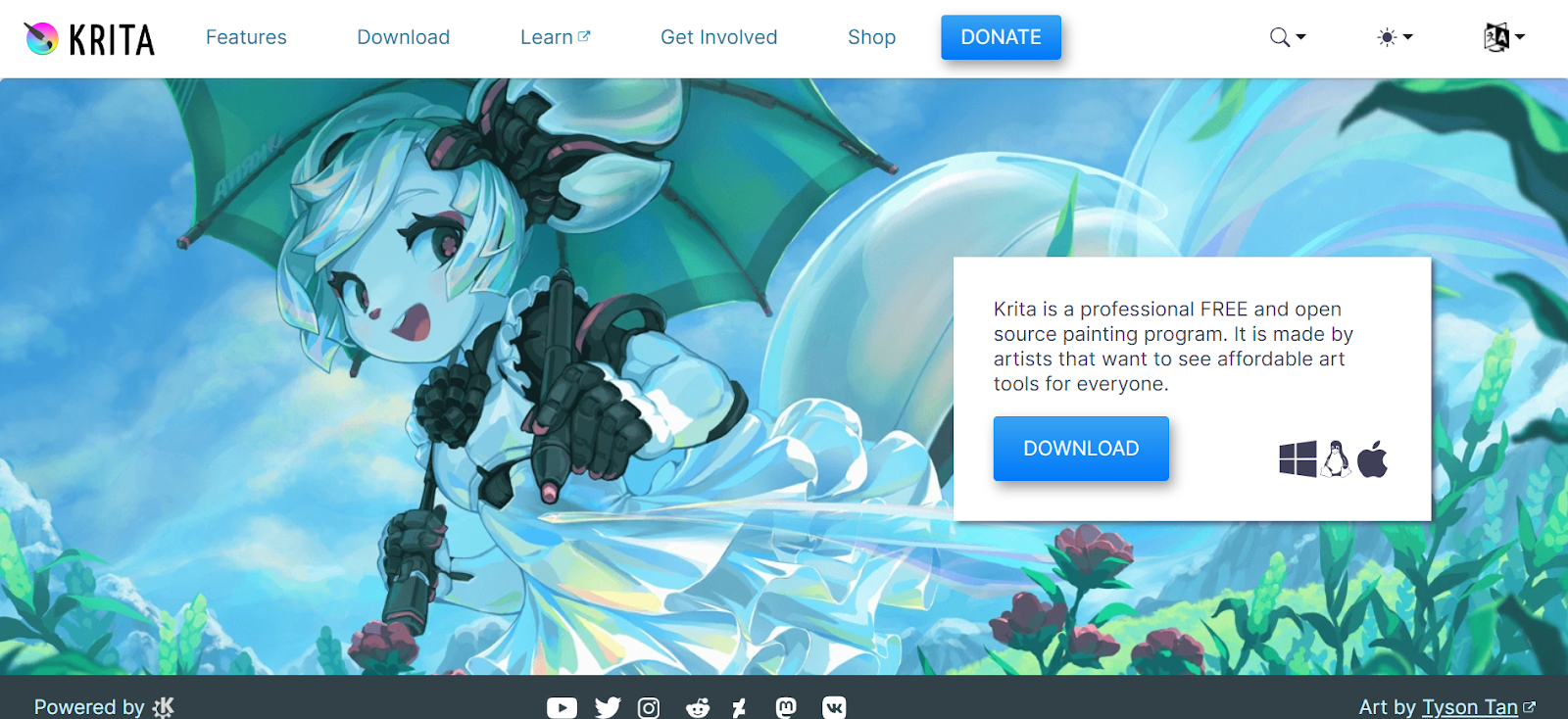
Krita stands out as a digital art creation tool, offering more than just animation capabilities.
With robust support for working with layers, various brushes, and a built-in timeline for 2D animation, users can seamlessly transition from creating digital art to animating their creations.
Its compatibility with drawing tablets further enhances its appeal, making it an excellent choice for artists seeking a comprehensive drawing and animation solution.
Features:
- Built-in timeline for 2D animation, allowing users to turn their artwork into animations.
- Excellent support for working with layers and a variety of brushes for creating intricate digital art.
- Compatibility with drawing tablets, providing a seamless drawing experience.
- Personalized brush options with nine different brush engines for customizable brush strokes.
- Built-in vector drawing tools for creating comic panels and illustrations.
- Ability to add stabilizer to brushes for smoother lines and strokes.
- Support for creating seamless patterns and textures, with the option to import brush packs and textures from other artists.
- Layer management tools for organizing artwork, including flattening, combining, and reordering layers.
- Completely free to use, making it accessible to all users.
- User-friendly interface, suitable for both beginners and experienced artists.
- High compatibility, available on Windows, Linux, and macOS platforms.
Cons of Krita:
- Limited dedicated support resources compared to some other software options.
- Designed for desktop use only, lacking mobile or web-based versions.
- Some users may find the user interface to be outdated compared to other software.
12. LottieFiles
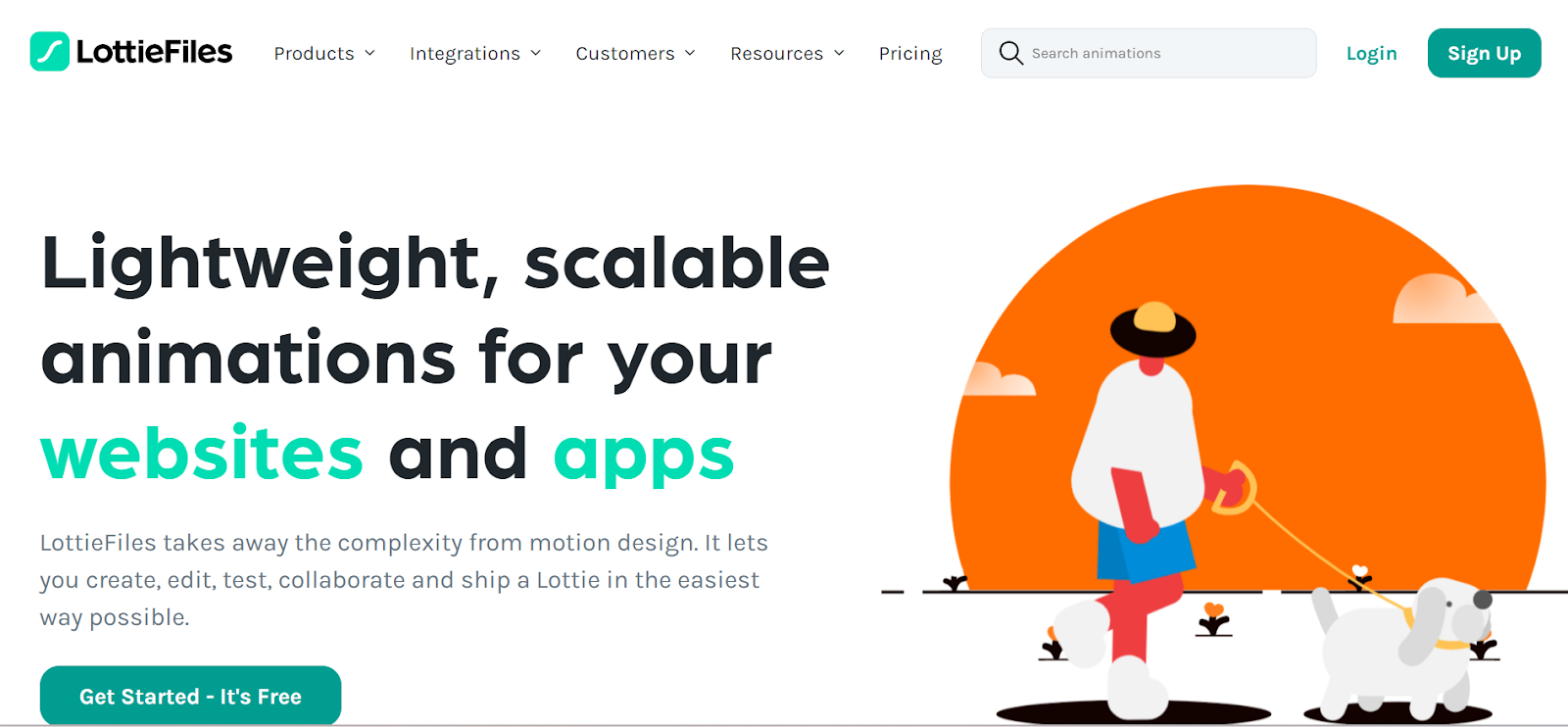
LottieFiles revolutionizes motion design, offering a platform to create scalable animations suitable for various applications, from pitch decks to websites.
Notably, animations created with LottieFiles are optimized for web design, ensuring minimal impact on page load speeds and scalability across different screen sizes.
Features:
- Seamless integration with Webflow for easy access to animations within the Designer interface.
- Library of over 50,000 free animations, providing ample options for customization.
- No coding skills are required, making it accessible to users with varying levels of expertise.
- Mobile app is available for on-the-go animation creation and editing.
Pros of LottieFiles:
- Integration with Webflow streamlines animation implementation in web design projects.
- An extensive library of free animations offers flexibility and creative freedom.
- User-friendly interface caters to both beginners and experienced designers.
- The availability of a mobile app facilitates animation creation and editing on multiple devices.
- The free plan option allows access to basic features without requiring payment.
Cons of LottieFiles:
- The free plan limits users to 1 private project and restricts shareable links.
- Advanced features such as customization, unlimited projects, version history, and collaboration are only available on paid plans.
13. FlipaClip
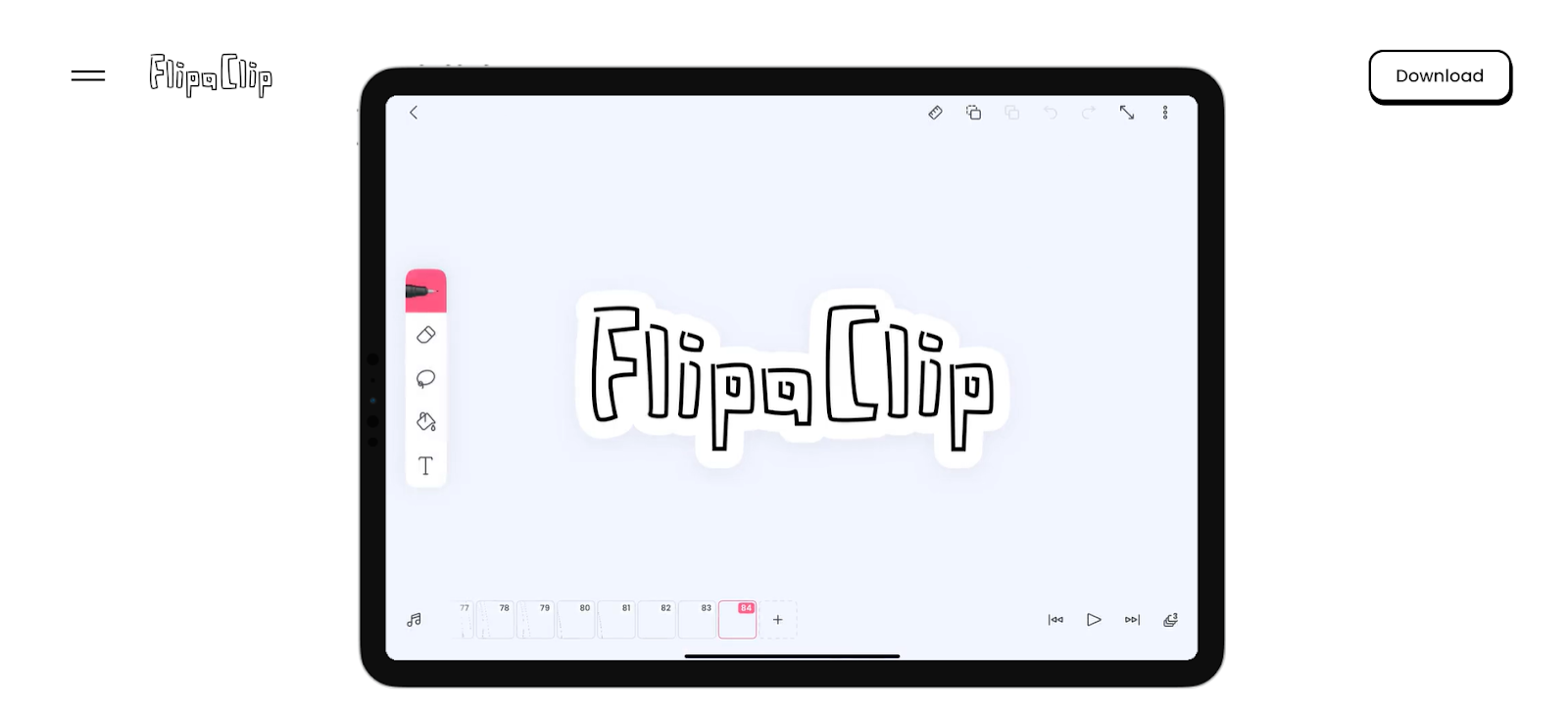
FlipaClip offers a convenient and accessible platform for creating 2-D animations, with features tailored to meet the needs of both beginners and experienced animators.
Despite some drawbacks, the app's robust community support and subscription options make it a compelling choice for animation enthusiasts seeking to bring their ideas to life on portable devices.
Features:
- Free and easy-to-use 2-D animation app available on Android and iOS platforms.
- Great customer support for users seeking assistance or guidance.
- Seamless sharing of animations on popular platforms like TikTok, YouTube, and Instagram.
- Accessible subscription options for enhanced features and ad-free experience.
Pros of FlipaClip:
- Beginner-friendly interface is suitable for users new to animation.
- Ability to easily share animations across various social media platforms.
- Dedicated and supportive online community of over 60 million users.
- Subscription options are available for users seeking advanced features and an ad-free experience.
Cons of FlipaClip
- Occasional bugs may affect user experience, owing to the app's newness.
- The presence of in-app ads in the free version may be distracting for some users.
14. SVGator
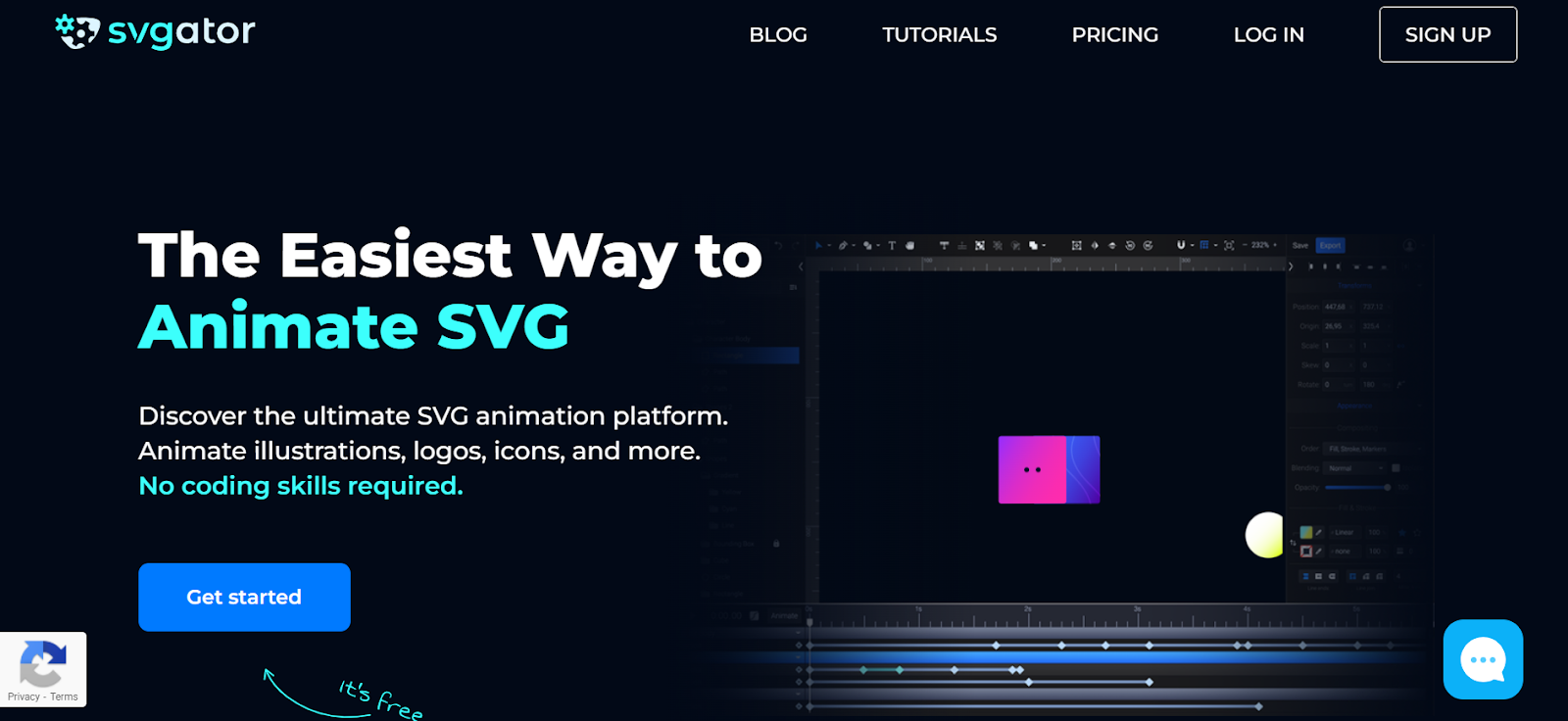
SVGator emerges as a powerful yet user-friendly SVG animation generator, offering a convenient browser-based solution for animating SVG files.
With its intuitive interface and interactivity options, SVGator caters to beginners and professionals alike, providing a seamless animation experience without the need for coding expertise.
Features:
- Browser-based platform with cloud rendering, eliminating the need for installation.
- Intuitive keyframe-based interface with little to no learning curve, suitable for beginners.
- Interactivity options for triggering animations, enhancing user engagement.
- Integration with Webflow, enabling seamless animation directly within the Webflow Designer.
Pros of SVGator:
- Limited free plans available, with lite plans starting at $12 per month.
- Browser-based platform offers convenience and accessibility, with no installation required.
- Webflow integration streamlines the animation process within the Webflow Designer, enhancing workflow efficiency.
Cons of SVGator:
- Not as capable as advanced animation software like Adobe After Effects, limiting its functionality for complex animations.
15. Daz3D
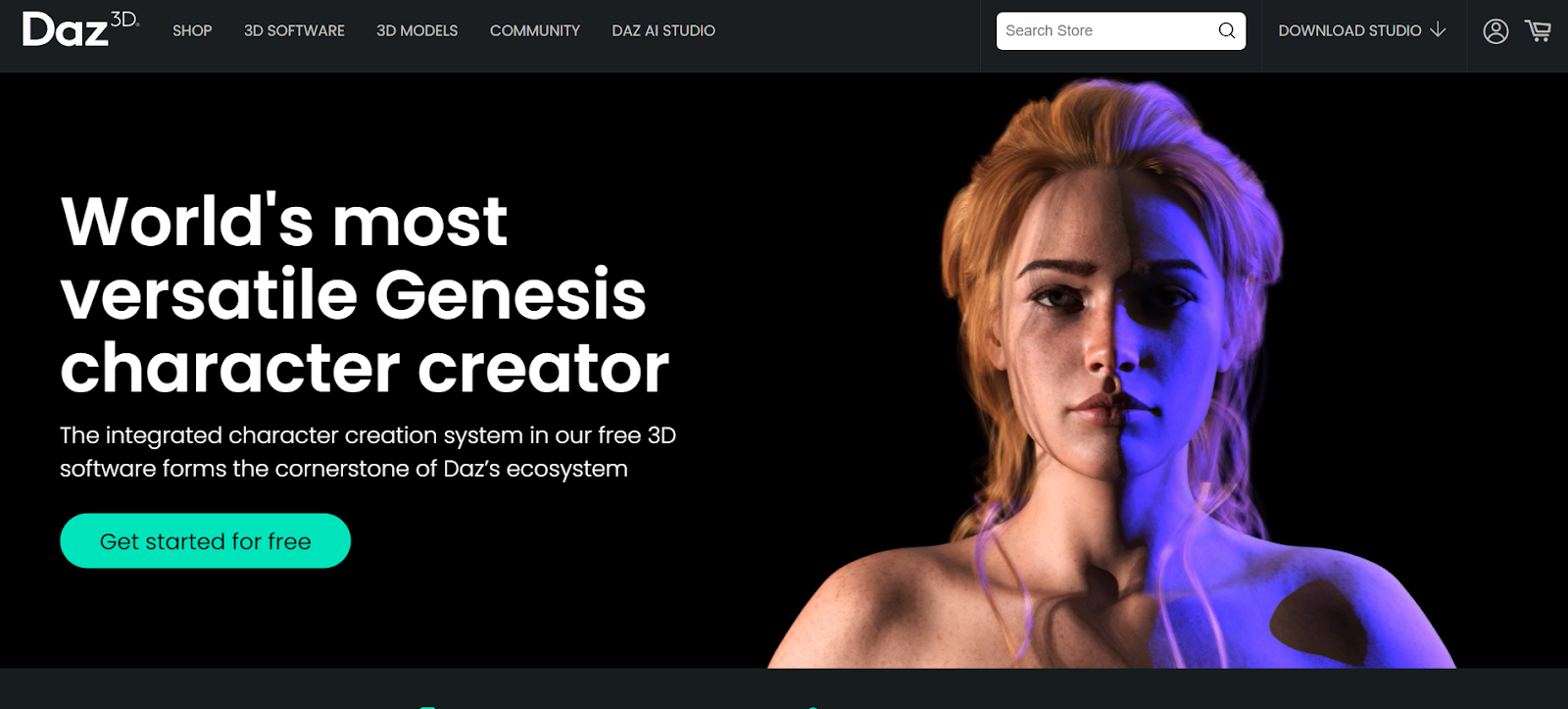
Daz3D offers a platform for creating models, realistic characters, and animations, empowering users to bring their creations to life with motion.
The software provides a starter package and two free 3D models to kickstart your creative journey.
Additionally, Daz 3D offers a bridge for Blender, enabling seamless integration of DAZ content into other software.
Whether you're a professional or a beginner, DAZ Studio unlocks your imagination, offering powerful tools in a user-friendly interface.
Features:
- Realistic 3D character morphing technology.
- dForce physics for simulating natural cloth and hair movement.
- Backward compatibility for assets created in earlier versions of Genesis.
- Filament Viewport and Render Engine for faster rendering time.
- Asset and resource manager.
Pros of Daz3D:
- Quality Models: Praised for excellent quality models in various categories.
- Easy Customization: Intuitive tools for combining characters with morph sliders.
- Powerful Animation System: Impressive animation capabilities, including muscle group flex function.
Cons of Daz3D:
- Limited Animation Options: Animation capabilities may not be as extensive as other software.
- Content Compatibility Issues: Some content may not work well for all characters, limiting control.
- Confusing UI and Crashes: Users may find the interface confusing, and the software may experience crashes during use.
Conclusion
Navigating the world of motion graphics doesn't have to be daunting or expensive.
With a plethora of free software options available, creators of all skill levels can explore their creativity without breaking the bank.
From Blender's robust 3D capabilities to FlipaClip's accessible mobile platform, there's something for everyone in this diverse landscape.
While each software has its pros and cons, the key is finding the right fit for your specific needs and skill level.
So go ahead, unleash your creativity, and dive into the world of motion graphics with confidence!
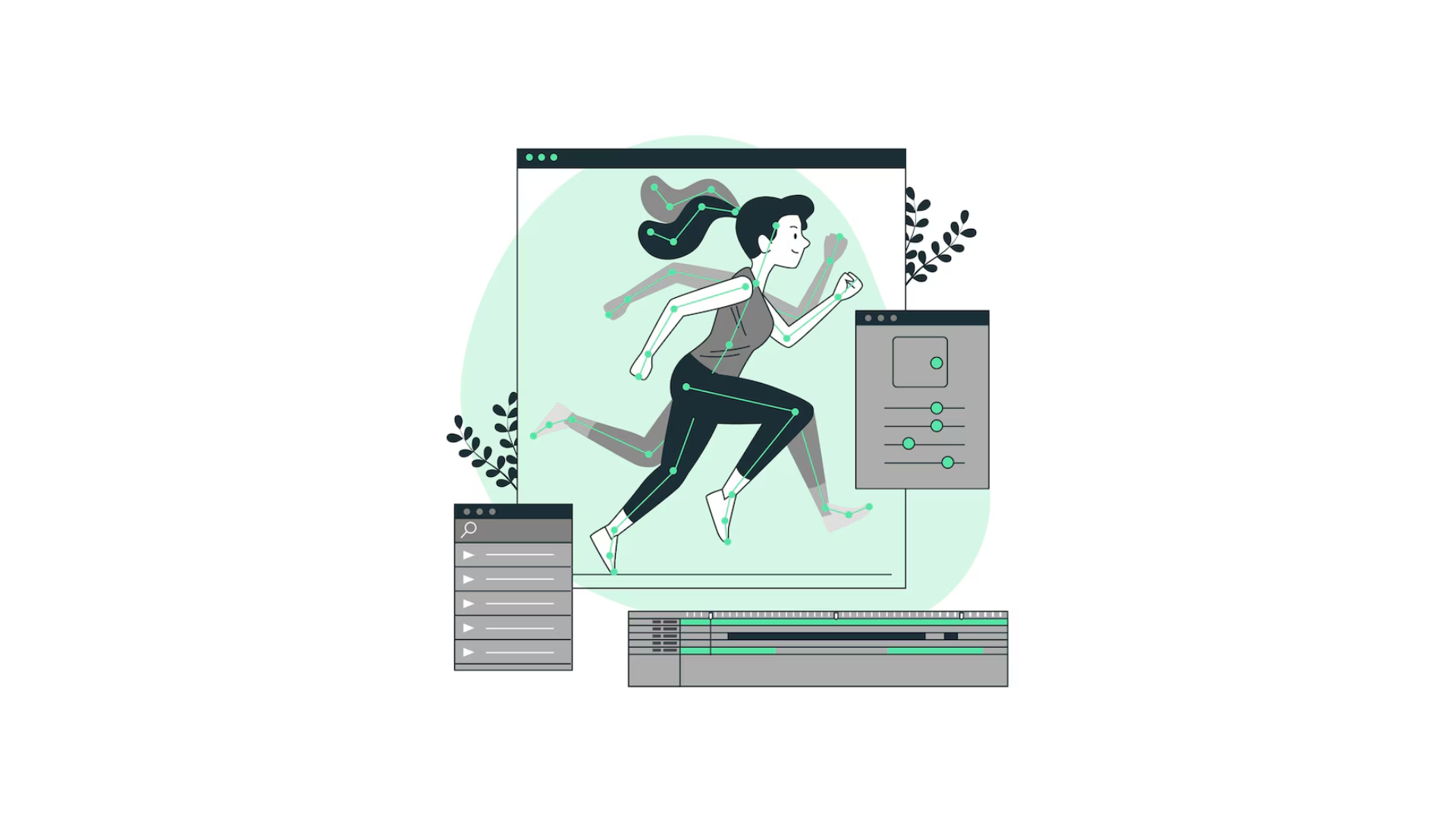


No Comments Yet
Let us know what you think